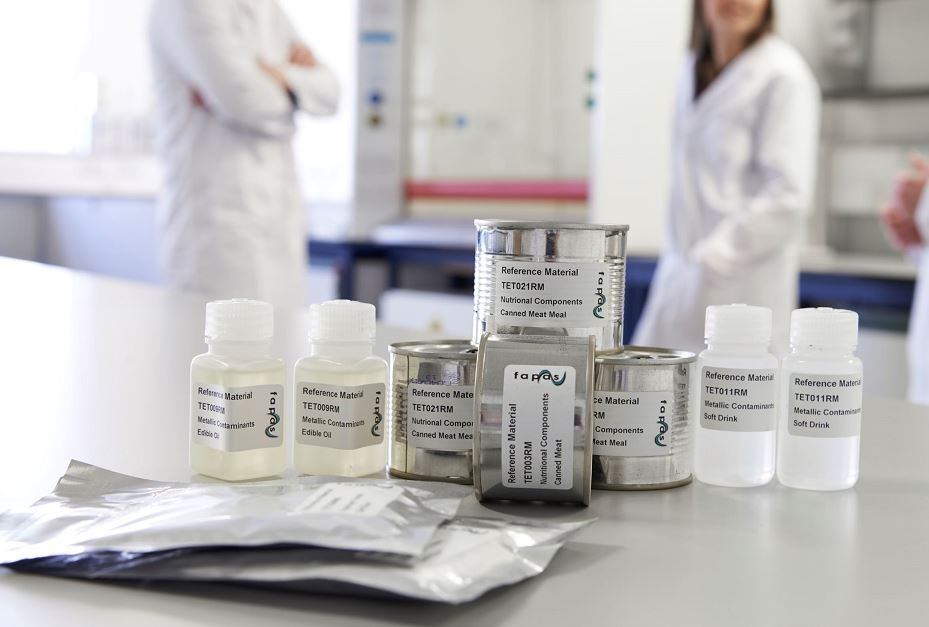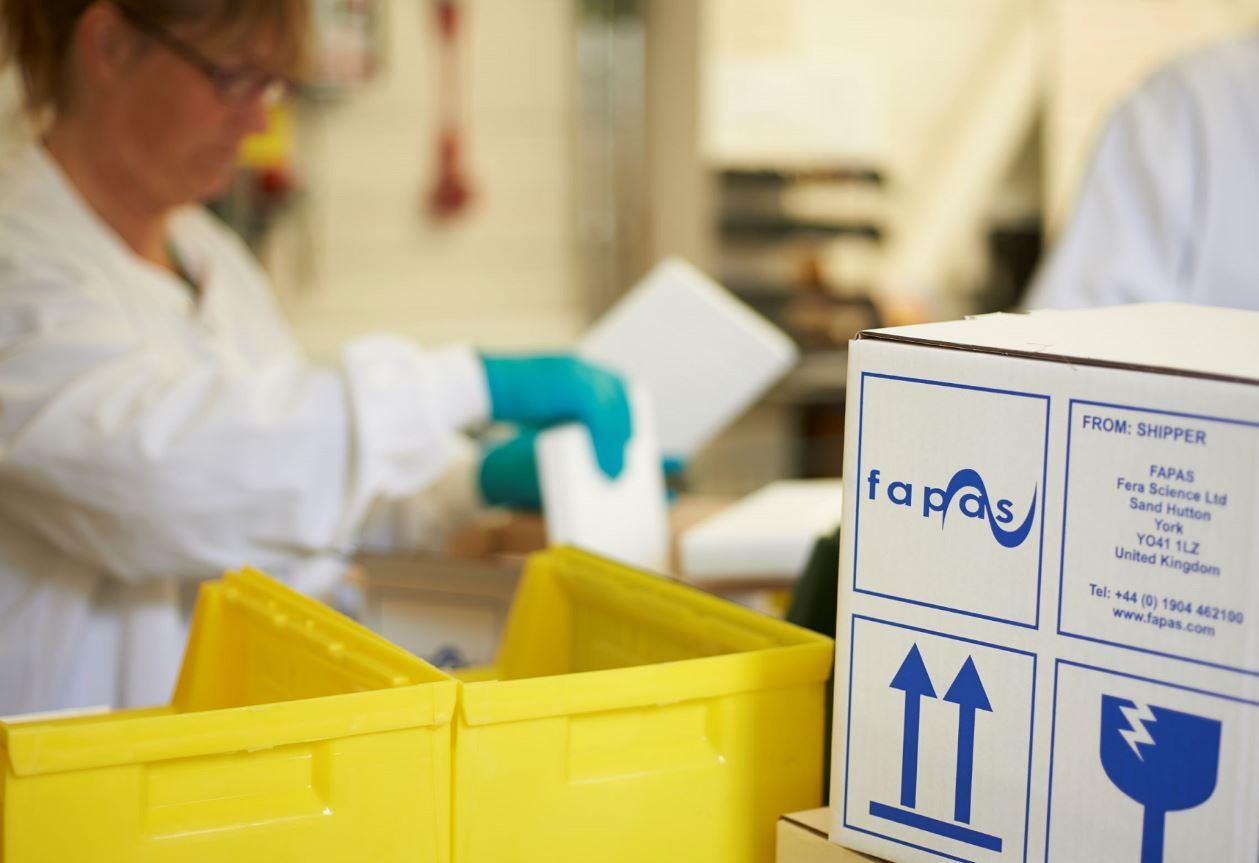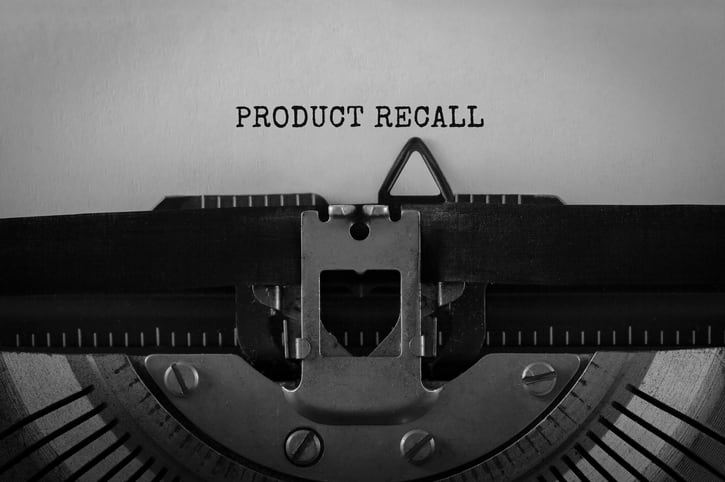The tests are designed to identify ergot alkaloids in multigrain baby food products and tropane alkaloids in cereals.
Economic benefits

The company, based in the UK, has also launched microbiology tests for ready meals, beef, cheese, chicken, smoked fish and dry cured meat and tests for Polycyclic Aromatic Hydrocarbons (PAHs) in shellfish and perfluoroalkylated substances (PFASs) in sea fish.
Speaking to Mark Sykes, lead senior scientist, Fapas, he said proficiency testing plays a huge role in ensuring consumer safety, and contamination risks in foodstuffs including; flour, honey, seafood, processed food, cod liver oil, cocoa powder, pulses, infant formula, offal, cauliflower puree and fruit juice.
He said the latest tests for 2019-2020 are in addition to its existing programme and the food and beverage industry relies on both continuity of testing regimes and adapting or reacting to new testing requirements.
Sykes has worked for Fera for nearly 22 years, moving to Fapas in 2009, as ‘scientific advisor’ to fill a gap in the operating model. He said at that time, Fapas was an established commercial proficiency testing provider, but its staff were so busy running proficiency tests they didn’t have time to evaluate problem areas, which is his role – to answer technical questions about proficiency testing or the methods which give rise to unusual observations in proficiency testing data.
“In the early days of food sector proficiency testing, there was a lot of reliance on small sets of expert laboratories providing what we think of as ‘reference’ results. There is now evidence that a large population of laboratories, of any status, can provide data of equal quality,” he said.
“The food and beverage testing industry could more quickly recognise the advantage of proficiency testing on a large scale which also has economic benefits in spreading the cost.
“We’ve seen this in Fapas in the last couple of years where major international food and beverage companies have set up bespoke schemes with Fapas for their network of labs but modified from existing types of proficiency testing.”
Allergens
He said one of the biggest challenges today is allergens, where the results are ‘highly dependent’ on which testing kit is used.
The worst case scenario is if an allergen is missed, leading to death. For example, in 2018 Natasha Ednan-Laperouse, 15, collapsed and died on a plane after eating sesame seeds in a baguette bought from Pret a Manger at Heathrow airport’s Terminal 5.
“The industry has been talking about allergens reference materials for years, but progress has been slow,” said Sykes.
“It is a difficult challenge to meet and has not been fully resolved.”
The AOAC Food Allergen Community reported that the first validated set of reference materials, for food allergen analysis, was commercially released in January 2017 using gluten protein types from wheat, rye, barley and oats.
But there are several factors that complicate the development of standardized reference materials for allergen analysis. For example, peanuts in the US and China can be significantly different in their composition, while internationally-standardised reference materials for allergen analysis must reflect what is currently traded on the market as a food ingredient.

MoniQA Association is leading an international task force to address certification issues and is a supplier of the first validated reference materials for milk allergen analysis.
Various gluten and gliadin preparations frequently used as reference materials for both clinical and analytical purposes have been found to be different in protein content bringing a level of uncertainty when comparing results from different methods.
Katharina Scherf from the German Institute for Food Chemistry and her team recently developed and applied a comprehensive strategy to isolate well-defined gluten protein fractions and gluten protein types from wheat, rye, barley and oat flours suitable as reference material for clinical assays and gluten-free compliance testing. Her Open Access publication describes the preparative strategy she used to develop these materials.
“The problem with food outbreaks is that they are largely unpredictable. However, once a problem has been detected, the amount of testing by other labs dealing with a similar risk expands rapidly,” said Sykes.
“The labs have to develop, validate and implement their new methods and they might not fall within scope of their existing accreditation. This in turn creates a sudden demand for quality control proficiency tests.
“It is in the interests of the PT (proficiency test) provider such as Fapas to monitor for food outbreaks and react with appropriate PTs. Recent examples of this include Fipronil in eggs, melamine in milk powder, and horse meat in processed foods. Melamine in milk powder continues to be a very popular proficiency test.
“In terms of unpredicted proficiency tests for non-target analysis, Fapas does run a scheme for the drinking water industry based on an emergency scenario. Labs receive a water sample unannounced and have to analyse it in real time to determine the contaminants in it and to advise on whether that water is fit for drinking or only washing or not at all.
“Contamination of drinking water supplies, either deliberately or accidentally, has an immediate impact on a large population of consumers, so this is an important test for laboratories involved in this kind of preventative detection.”
Pesticide residues
Talking about how the food and beverage testing industry relies on both continuity of testing regimes and adapting or reacting to new testing requirements Sykes said one example is testing for pesticide residues in wine.
“The pesticide analysis laboratories must cover a wide range of food stuffs and target analytes (several hundreds of pesticides could be potential residues). There is now a growing concern at EU level about pesticide residues being found in wine but there is a lack of adequate quality assurance, i.e. not enough proficiency testing,” he said.
“Routine wine laboratories are used to monitoring only for copper (from copper sulphate used in Bordeaux mixture applied to vines to control mildew). However, labs will now have to expand their scope to cover many pesticide compounds in a matrix that they may not be used to. If it’s an unfamiliar analysis, how do they know they’re getting it right?”
According to EFSA, Europeans continue to eat food that is largely free of pesticide residues or which contains levels of residues within legal limits, the latest monitoring figures show.
More than 96% of samples analysed for the latest annual report on pesticide residues in food were found to be within legal limits; around 51% were free of any quantifiable residues.
Vytenis Andriukaitis, EU Commissioner for Health and Food Safety, said: “As in previous years, this report confirms the high level of compliance of food on the shelves in the EU.
“Every year, thousands of food products are controlled by Member States to check that the legal limits are being respected: we owe it to European citizens to make sure the EU's food chain not only remains the most stringent and controlled in the world but is one that we are very serious about continuously improving.”
To coincide with the publication of this year’s report, EFSA has developed a simple tool where users can see the main findings by country and food product.
Formerly the Food and Environment Research Agency – Fera improves the quality, accuracy and comparability of the results at Official Control Laboratories (OCLs) and supports national competent authorities with scientific and technical assistance.
Participating in a Fapas testing schemes allows a laboratory to demonstrate its competence to its staff and clients, and to gain and maintain EN ISO/IEC 17025 accreditation. It provides laboratories with confidence in their products, supply chain, analytical methods and staff.
The international harmonised protocol for proficiency testing was revised in 2006, and it’s still valid today. The main challenge is not so much improving proficiency testing but improving laboratories’ perception and interpretation of proficiency testing, said Sykes.
He added by 2020 we can expect to see more reference materials being generated from large scale inter-laboratory studies such as proficiency tests, this will include microbiological reference materials as well as food chemistry ones.
“As global food trade increases, we’ll also see increasing acceptance of international standards in trade agreements supported by quality assurance data from proficiency tests,” said Sykes.
The next stage for Fapas is contingency planning for Brexit and continuing its work with key international accounts for bespoke work and supporting its network of agents with their customers.
According to a UK Government report, consumers and businesses in the UK will continue to benefit from the same high standards for food and feed safety after the UK leaves the EU.
The Responsibility for taking certain technical and routine food safety risk management decisions could be delegated to food safety authorities at a point after EU exit but this would be subject to consultation.
‘The system will continue to offer at least the same scientific robustness and transparency as current risk assessment and risk management processes. Food safety authorities will continue to engage with relevant stakeholders as options are considered and recommendations developed. They will also issue public consultations on risk management proposals as appropriate’, it said.
Sykes added: “We have several meetings to attend this year in support of this work. We’re also thinking of programme planning for 2020-2021 and seeking feedback and ideas to put into that process.”



